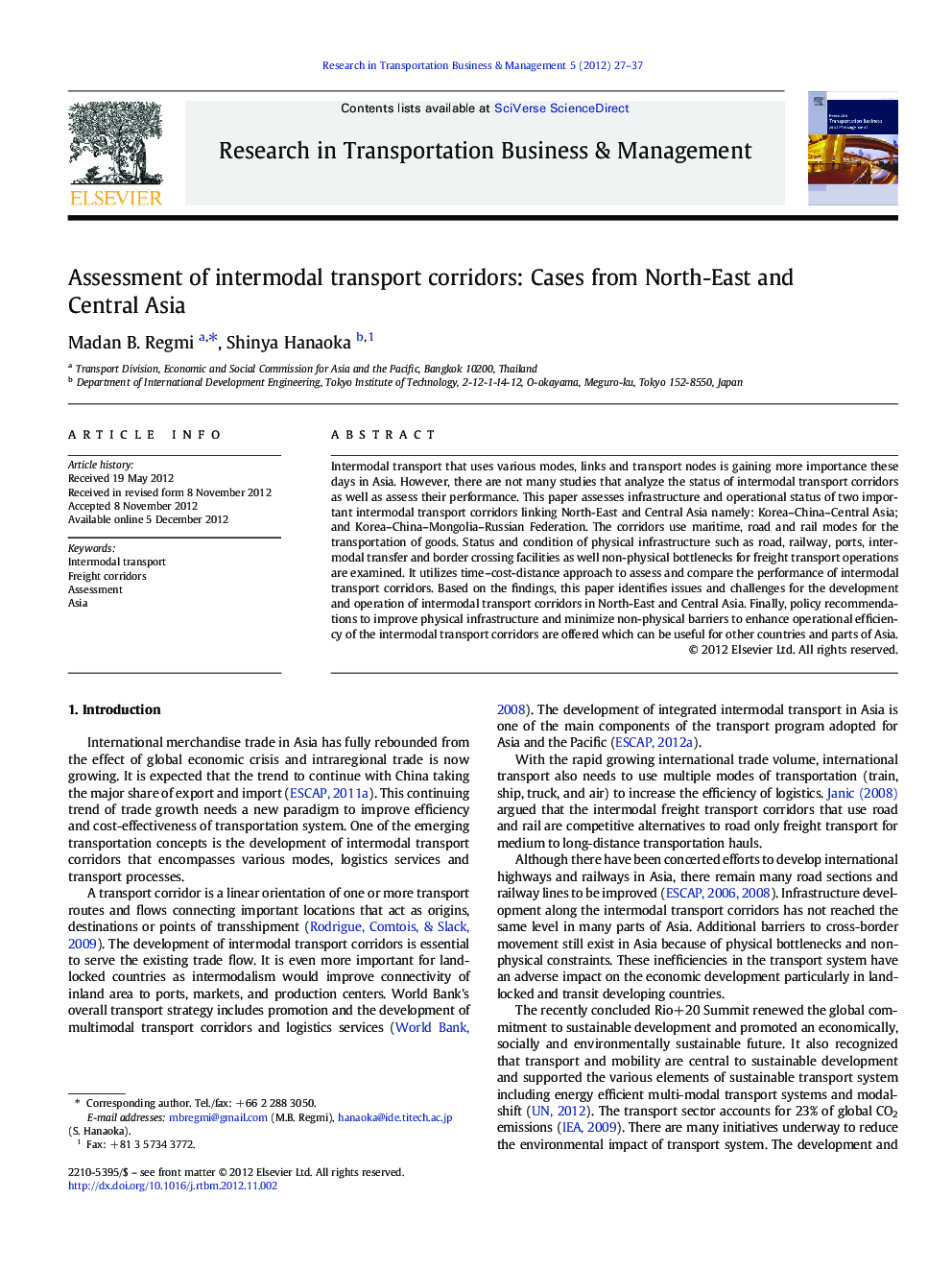| Article ID | Journal | Published Year | Pages | File Type |
|---|---|---|---|---|
| 999823 | Research in Transportation Business & Management | 2012 | 11 Pages |
Intermodal transport that uses various modes, links and transport nodes is gaining more importance these days in Asia. However, there are not many studies that analyze the status of intermodal transport corridors as well as assess their performance. This paper assesses infrastructure and operational status of two important intermodal transport corridors linking North-East and Central Asia namely: Korea–China–Central Asia; and Korea–China–Mongolia–Russian Federation. The corridors use maritime, road and rail modes for the transportation of goods. Status and condition of physical infrastructure such as road, railway, ports, intermodal transfer and border crossing facilities as well non-physical bottlenecks for freight transport operations are examined. It utilizes time–cost-distance approach to assess and compare the performance of intermodal transport corridors. Based on the findings, this paper identifies issues and challenges for the development and operation of intermodal transport corridors in North-East and Central Asia. Finally, policy recommendations to improve physical infrastructure and minimize non-physical barriers to enhance operational efficiency of the intermodal transport corridors are offered which can be useful for other countries and parts of Asia.
